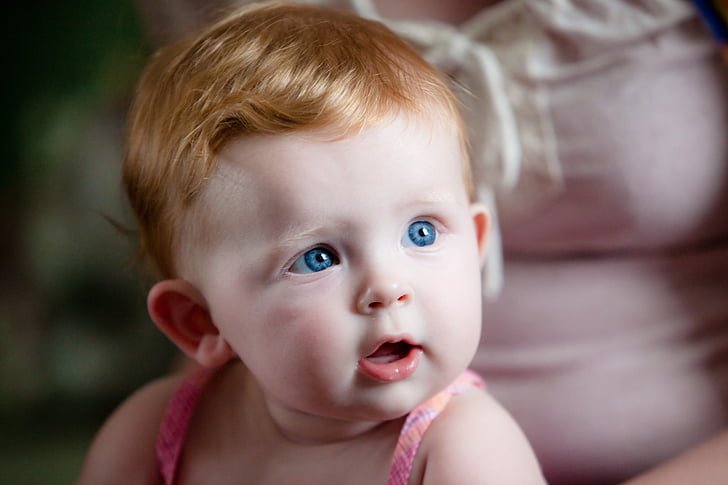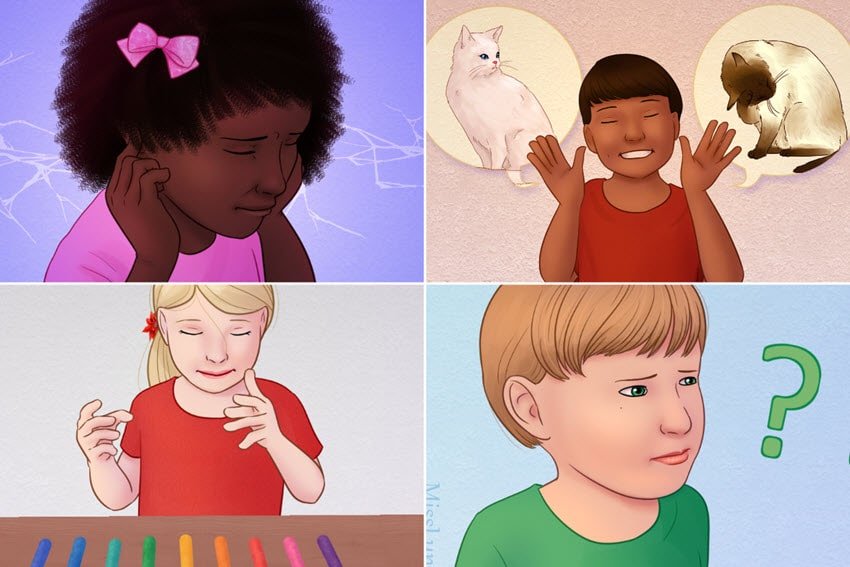There’s no greater feeling than when you lay your eyes on your baby for the first time. Or, the comfort you find when you catch a glimpse of them fast asleep. Or, those transient moments when you stare at a perfect little human and ask yourself: “did I really make that?”
As parents, we stare at our babies. We stare at them when they’re asleep. We stare at them when they’re awake. We stare at them when we want them to stop. that. right. now. And we’ll never stop staring – because a piece of us will always be in awe that they’re ours.
However, research shows babies spend quite a bit of time staring as well. The truth is, babies love staring. It doesn’t matter if it’s at mum or dad, or a stranger playing peek-a-boo at the grocery store. Someone (or something) is within their line of sight? Baby is going to stare.
There are many reasons why babies stare. Most are typical advances in a child’s development, however, in some cases, staring can be an early sign of developmental challenges or disabilities. To understand a little bit more about staring and its role in your child’s development, let’s first dig into why babies stare.
Why do babies stare?
Babies are captivated by anything they can see, hear, or touch. Everything in their world is new to them – and they use their senses to navigate it. When a baby uses their senses, it creates a connection to their brain and helps them learn.
View in gallery
As adults, we tend to tune out our senses, while babies, on the other hand, draw them in. For example, when a baby sees a faucet running with water – they will hear the sound of the water running, see the water running from the faucet, and typically swat at the water with their hands for touch. During this process of exploring, babies use their senses to draw a connection. So, when your baby stares – whether it’s at you, or the dog, or the faucet – their brain is working to build a foundation of the world around them.
Essentially, a baby staring is a baby trying to connect the dots.
What to do when a baby stares at you?
You’ve locked eyes with a baby. They’re babbling as you make silly faces, encouraging a gummy, toothless grin. It’s no secret that a babyface is simply irresistible to stare at. But what you may not know, is the eye contact you’re making with a baby is an important milestone in their development.
Eye contact is one of the first milestones babies achieve – it lets parents know that their baby finally sees them and they are recognized. A mutual gaze between a parent and their baby is a shared communicative experience. Through gestures, such as facial expressions and smiles, a parent and baby can communicate long before words are ever exchanged.
View in gallery
When a baby shares a gaze with you, it’s both emotional and intellectual. Eventually, a baby can draw a connection between people and the services they offer them. For example, when a baby sees their parent, they may draw a connection between food and feeder. Through eye contact, babies will also learn to identify voices and people, and will connect that smiles mean love and affection. This significant milestone makes a baby feel calm and engaged. And as a parent, our goal is to encourage a mutual gaze to help develop these emotional capabilities.
When a baby looks at you, use it as an opportunity to smile, speak, sing, and gesture within the baby’s vision. If a baby is staring at an object, you can also use this as a learning opportunity to facilitate language development.
Why does my baby gaze away?
Like everyone, even babies can feel overwhelmed and overstimulated. Sometimes, there’s just too much going on – lights, sounds, people – it can all be too much.
If you find your baby has turned away from an activity to gaze at a wall (or into space), it could be a sign that they’ve had enough and need a break. A baby’s world is constantly overwhelming them with information, and sometimes a baby needs time to process. This type of processing or “empty” gaze is due to something called “sensory overload”.
Sensory overload has a variety of different symptoms. While a main cue of overstimulation is gazing or looking away from a person or activity, you may also find your baby is hard to console, fussy, or crying.
Experts recommend removing your baby from their activity and providing them with a safe space to recover. Rocking a baby or providing a soother can help calm their senses.
Learning and stimulation go hand-in-hand, so by knowing the signs of overstimulation, you can help your baby find balance before they become overwhelmed.
Could a blank stare mean something else?
Eye contact is a key social, emotional, and intellectual development milestone – which is why some parents grow concerned if their baby lacks this ability. While a blank stare can be completely innocent (and as we learned a sign of overstimulation), it could also be an indication of a developmental delay.
Autism is a spectrum disorder that appears in infancy and early childhood. Children with autism will have delays in key developmental milestones, such as, learning to talk, playing with others, and making eye contact. Because autism is a spectrum, some of the signs and symptoms may not be as apparent as others. However, if caught in infancy, treatment can take full advantage of the young brain’s plasticity.
If you notice your baby or toddler avoiding eye contact (such as not looking at you when being fed or smiled at), you should reach out to your doctor for further evaluation. Babies on the spectrum may also struggle to follow objects visually or imitating facial expressions.
In most cases, it’s the parent that is most aware of their child’s development and as such, may have an instinct that their child requires extra support.

Important Milestones
Some studies suggest that babies can recognize their parents within days of birth, but others say it could take up to two months. Typically, between 6 to 10 weeks of age, is when you’ll begin to notice your baby directing their eyes more intentionally at you (this is also when you’ll probably catch your first smiles). At around 3-months-old, babies should be able to follow their caregiver or parent’s movement. Finally, by 9 to 11 months of age, babies will have an “adult” understanding of the use of their eyes – that they’re intended to look and see.
How to encourage eye contact from your baby
Encouraging eye contact can be as easy as holding your baby about 10 to 20 inches away as you gaze into their eyes. However, it’s usually better for a baby to initiate eye contact. A parent should follow-up by interacting with smiles, singing, talking, and gestures within the baby’s line of sight. Besides, a mutual gaze is much more powerful when you add touch – such as a tickle or a hug. This promotes attachment, helping your baby feel safe and secure.
With all things, it’s important to respect boundaries. While we want to encourage engagement and interaction with babies through eye contact, it’s also important to give them time and space to take in their world. By following their cues (and the tips above), your child will quickly connect with you and their surroundings. If you ever have doubts about your baby’s development, always reach out to a professional – they’re here to help!






